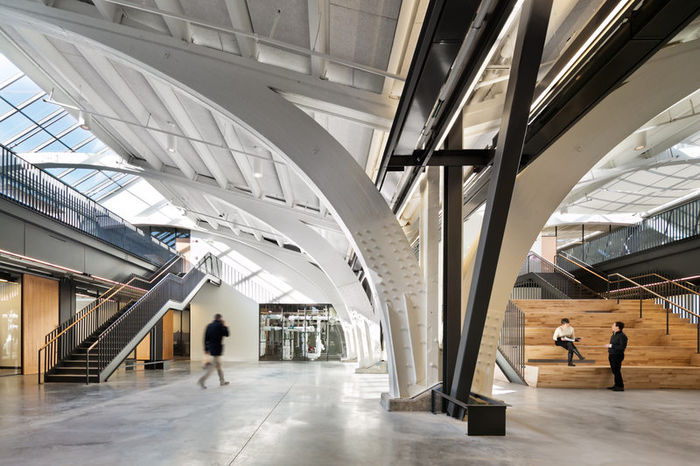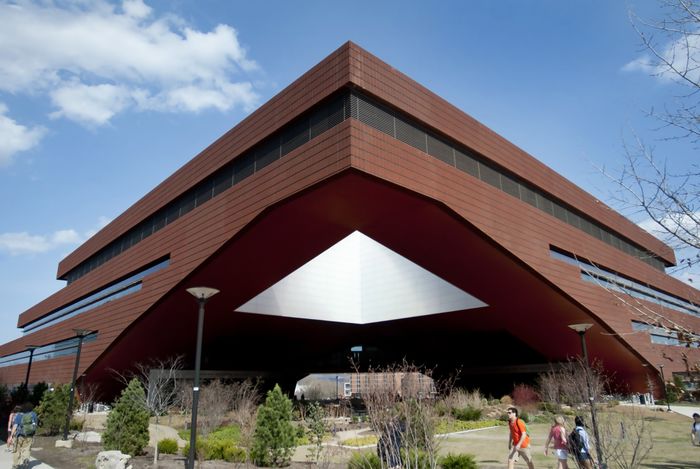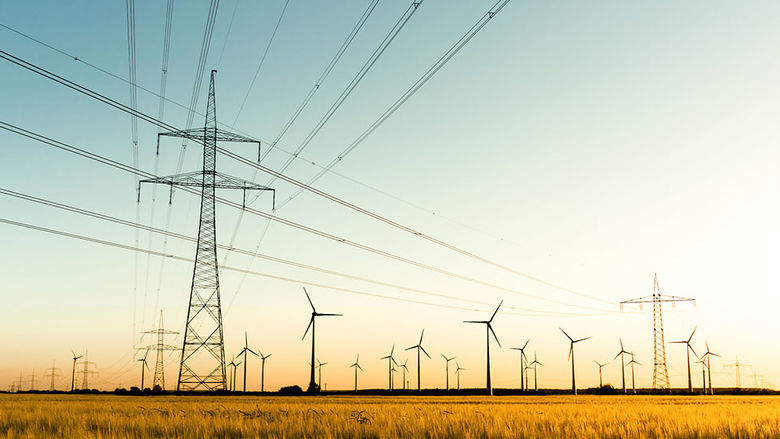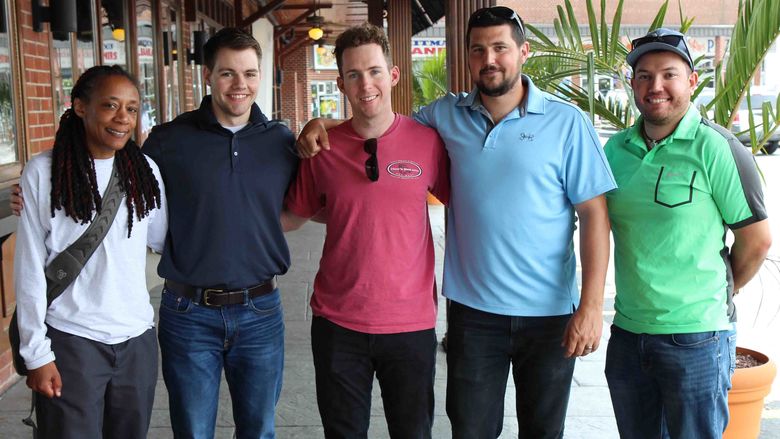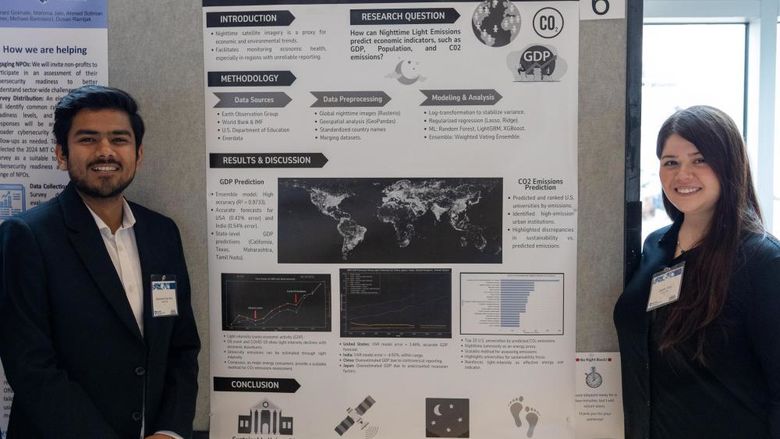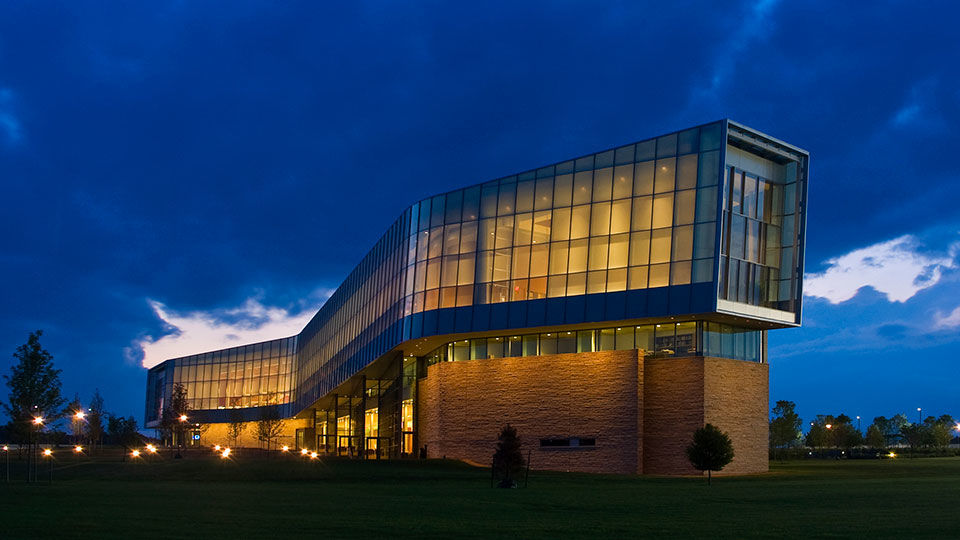
The Lewis Katz Building is one of more than two dozen LEED-certified buildings at University Park. It houses the Law School and the School of International Affairs.
As the land-grant university for the energy-rich state of Pennsylvania, it isn’t surprising that Penn State counts among its core strengths a broad and deep expertise in energy-related research. Today, in areas from materials science to policy, from environmental chemistry to architectural and electrical engineering, the range and quality of our research make Penn State a world leader in energy research.
We've produced a package of five stories that capture just a sliver of that expertise, briefly sampling some of the more innovative ideas of Penn State researchers working together to solve key questions of making and using energy.
Please visit our other posts on:
Generating energy—tapping natural processes to power our future
Storing energy—revolutions in materials to make batteries that charge faster, last longer, and are safer than conventional batteries
Catching carbon—new technology to capture CO2 before it gets into the atmosphere and either sequester it or use it to create new products
Pulling it all together—integrating new sources of energy with the traditional electric grid to provide reliable, sustainable power for homes and businesses
And for an inside look at how Penn State students are making a mark in the field of wind energy, see A Shift in the Wind.
Almost 40 percent of the energy we use goes to heat, cool, light, and power appliances in the buildings we live and work in.
Penn State is taking aim at that figure by making its buildings more energy efficient through green design of new buildings, targeted retrofits of older ones, and designing and testing innovative power systems and appliances. These efforts have made the University a global leader in sustainable building practices. Here are a few examples.
URBAN EXPERIMENTS
In addition to making sure that new buildings on Penn State campuses merit LEED certification for energy efficiency, the University also owns two buildings at the Philadelphia Navy Yard that function both as practical workspaces and as “living laboratory” experiments in sustainability.
The former naval shipyard was decommissioned in the 1990s and has been resurrected as a commercial and industrial center. Covering almost 2 square miles—bigger than the central downtown area—and providing jobs for more than 13,000 employees, the Navy Yard has become an economic boon for Philadelphia.
Penn State, particularly the department of architectural engineering, is an important part of the mix, says sustainable energy program manager Lisa Shulock. “Penn State created and has helped nurture a group of professionals who are all connected here in what we call the Navy Yard energy ecosystem,” she says. The University also has skin in the sustainability game: Its two buildings at the Navy yard provide real-life, real-time tests of energy systems.
The newly-built 7R building includes an electric microgrid designed to minimize use of fossil fuels while creating a pleasant indoor environment. [Read more about 7R on page 25.] Then there’s building 661, a squat brick structure built in 1942 and used as a rec center for Naval officers. By the time the University bought it in the early 2000s, it was in very bad shape.
Penn State didn’t just renovate 661; using commercially available products and techniques, it retrofitted the entire 36,000-square-foot structure to house offices, conference rooms, and meeting spaces while also testing the performance of three kinds of heating and cooling systems. There’s a big educational component, as well: Penn State holds classes there, and the University offers internships to college students and workforce training to electricians and other professionals adapting to new energy technologies.
Shulock, assistant research professor Mark Stutman, and their colleagues are documenting the performance of the systems in 661. So far, even though its systems are still being optimized, 661 has been using about half as much energy as a conventional building of comparable size.
—Cherie Winner
GOING GLOBAL
In May, 2018, Penn State President Eric Barron signed a memorandum of understanding with the United Nations Economic Commission for Europe, making Penn State the lead institution in the Global Building Network, a U.N. initiative that encourages and supports the use of energy-efficient building practices worldwide.
The selection of Penn State was due in large part to the quality of its Architectural Engineering program, one of the best of its kind in the U.S. Penn State is also a leader in erecting high-performing buildings at its campuses statewide.
“The two threads of the work that we do here—the energy-efficient buildings and especially retrofits of existing buildings, and the electric microgrid in building 7R—are strategies for being able to accommodate the next 30-some years of population growth around the globe,” says Stutman. “If buildings continue to be built with ‘business as usual,’ the greenhouse gas impacts are going to be pretty devastating to future generations.”
—Cherie Winner
COOL RUNNING
Consider the energy costs of a modern home or office building: Refrigeration and air conditioning account for about one-quarter of the electricity used there. But conventional cooling technology, based on compression of refrigerant gases, has not changed much since the 1890s. In addition to hogging electricity, vapor compression is loud, bulky, and a major contributor to global warming.
Materials scientists have long dreamed of a more elegant solution—a solid-state cooling device that exploits the properties of thermoelectric materials. As Qiming Zhang explains it, these materials couple thermal and electrical properties so that the temperature of the material changes when electricity is applied. No greenhouse gases or bulky compressors are required.
Thermoelectric ceramics showed promise, but didn’t cool enough. In 2003, Zhang, distinguished professor of electrical engineering, got the idea to try something different. He read up on the literature, and predicted he could make a polymer that would have a cooling effect ten times that seen with ceramics. In 2008, with funding from the Department of Energy, he succeeded.
The new material could offer a host of applications: silent-running refrigerators; quiet, energy-efficient air coolers small enough to install in rooms or even in clothing.
Now the main task is to scale up manufacturing and make it cost-effective to produce. Zhang thinks that is do-able, but it will take a sizeable investment.
“What we need is a tabletop device to demonstrate that this can work,” he says. “Once its market potential becomes clear, solid-state cooling could take off like liquid crystals did a few years ago. I believe this could be a truly transformative technology.”
—David Pacchioli
Lisa Shulock is sustainable energy program manager at Penn State at the Navy Yard. Mark Stutman is assistant research professor at Penn State at the Navy Yard. Eric Barron is president of Pennsylvania State University. Qiming Zhang is distinguished professor of electrical engineering.
Technical director of Penn State at the Navy Yard is James Freihaut, professor of architectural engineering.
This story first appeared in the fall 2018 issue of Research/Penn State magazine.
